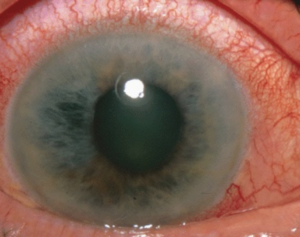
The Latest NEWS
How Glaucoma Is Detected
 One of the most common eye problems that a patient can have is glaucoma. Glaucoma is actually a group of eye conditions that can eventually lead to blindness. In most cases, glaucoma has no symptoms, which leads to a patient being unaware that he or she has this disease until an eye doctor discovers it. At the practice of Dr. Edwin M. Schottenstein, we’re able to provide a series of tests to determine whether you have glaucoma. When you come to visit your Manhattan and NYC eye doctor, we’ll perform the following tests.
One of the most common eye problems that a patient can have is glaucoma. Glaucoma is actually a group of eye conditions that can eventually lead to blindness. In most cases, glaucoma has no symptoms, which leads to a patient being unaware that he or she has this disease until an eye doctor discovers it. At the practice of Dr. Edwin M. Schottenstein, we’re able to provide a series of tests to determine whether you have glaucoma. When you come to visit your Manhattan and NYC eye doctor, we’ll perform the following tests.
Tonometry
Tonometry is used to determine the pressure within your eye. With a small device, known as a tonometer, a bit of air will be puffed into your eye, measuring your eye pressure. The regular range of normal pressure is 10 to 20 mm of mercury. Most glaucoma cases have pressure exceeding 20 mm of mercury. However, there are many cases of glaucoma that occur within a lower range, such as normal (or low)-tension glaucoma, which is why it’s important for us to perform other tests as well.
Dilated Eye Exam
In this test, the eye doctor will put drops in the patient’s eye to dilate his or her pupils. After the pupils are dilated, the doctor will look inside the patient’s eye, often with an ophthalmoscope. This will magnify the optic nerve to view the cupping of the nerve head. If there’s advanced cupping, it can be a sign of glaucoma. While this can be an indicator, it isn’t always the case, as it can also be hereditary.
Visual Field Test
A visual field test can be performed in a number of ways with different instruments. One of the ways it’s performed is by having a light flash in front of you several times. You’ll press a button whenever you see the flash. The light will flash in different areas around your peripheral vision to map out your visual field. It will determine if there are any defects in your visual field. If there’s changing in your visual field (or your eye pressure or the cupping of your optic nerve) over time, it can be a sign of glaucoma.
Gonioscopy
While the first three tests are routinely done for all patients, if you’re considered a glaucoma suspect, you’ll undergo a gonioscopy test as well. A patient will have a lens put on his or her eye and then sit behind a biomicroscope in order for the eye doctor to get a better view of the angle in the anterior chamber of the eye. This test tells you whether the angle is open, whether there are obstructions or other problems, and it can also differentiate between the types of glaucoma.
Pachymetry
Like gonioscopy, pachymetry is typically only performed if a patient is a glaucoma suspect. Pachymetry will measure the thickness of the cornea by using a pachymeter. An eye doctor will apply a topical anesthetic to the eye and then touch the cornea with the pachymeter in order to measure the thickness of the cornea. When you have a thinner cornea, you have a greater risk of having glaucoma.
Contact Your Manhattan and NYC Ophthalmologist Today!
If you have any further questions, please feel free to get in touch with us and let us know. If you’d like to schedule an appointment with us, we encourage you to give us a call at (212) 874-2300. We’re looking forward to seeing you and helping you achieve even greater visual health!
